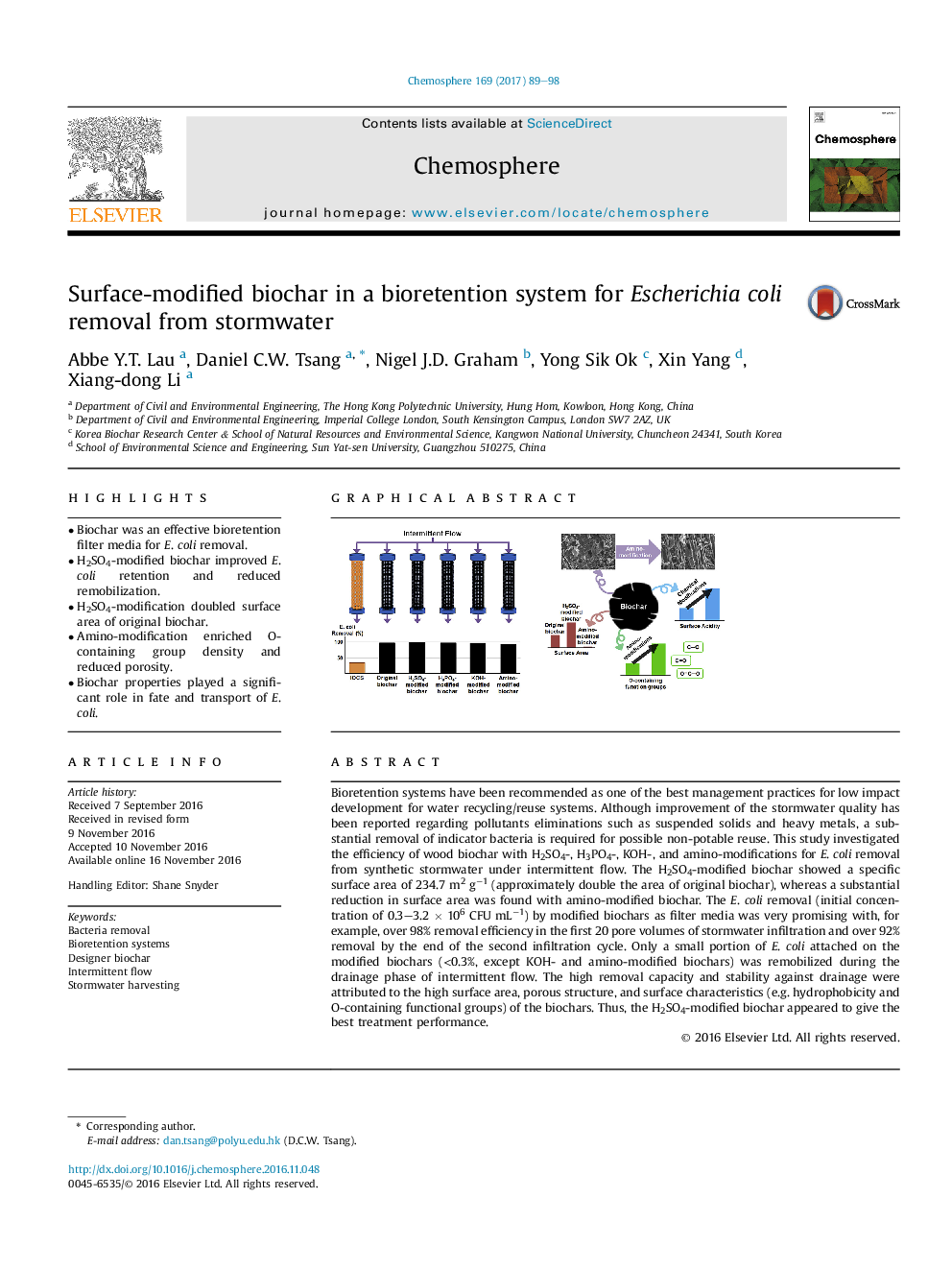| Article ID | Journal | Published Year | Pages | File Type |
|---|---|---|---|---|
| 5747034 | Chemosphere | 2017 | 10 Pages |
â¢Biochar was an effective bioretention filter media for E. coli removal.â¢H2SO4-modified biochar improved E. coli retention and reduced remobilization.â¢H2SO4-modification doubled surface area of original biochar.â¢Amino-modification enriched O-containing group density and reduced porosity.â¢Biochar properties played a significant role in fate and transport of E. coli.
Bioretention systems have been recommended as one of the best management practices for low impact development for water recycling/reuse systems. Although improvement of the stormwater quality has been reported regarding pollutants eliminations such as suspended solids and heavy metals, a substantial removal of indicator bacteria is required for possible non-potable reuse. This study investigated the efficiency of wood biochar with H2SO4-, H3PO4-, KOH-, and amino-modifications for E. coli removal from synthetic stormwater under intermittent flow. The H2SO4-modified biochar showed a specific surface area of 234.7Â m2Â gâ1 (approximately double the area of original biochar), whereas a substantial reduction in surface area was found with amino-modified biochar. The E. coli removal (initial concentration of 0.3-3.2Â ÃÂ 106Â CFUÂ mLâ1) by modified biochars as filter media was very promising with, for example, over 98% removal efficiency in the first 20 pore volumes of stormwater infiltration and over 92% removal by the end of the second infiltration cycle. Only a small portion of E. coli attached on the modified biochars (<0.3%, except KOH- and amino-modified biochars) was remobilized during the drainage phase of intermittent flow. The high removal capacity and stability against drainage were attributed to the high surface area, porous structure, and surface characteristics (e.g. hydrophobicity and O-containing functional groups) of the biochars. Thus, the H2SO4-modified biochar appeared to give the best treatment performance.
Graphical abstractDownload high-res image (356KB)Download full-size image
